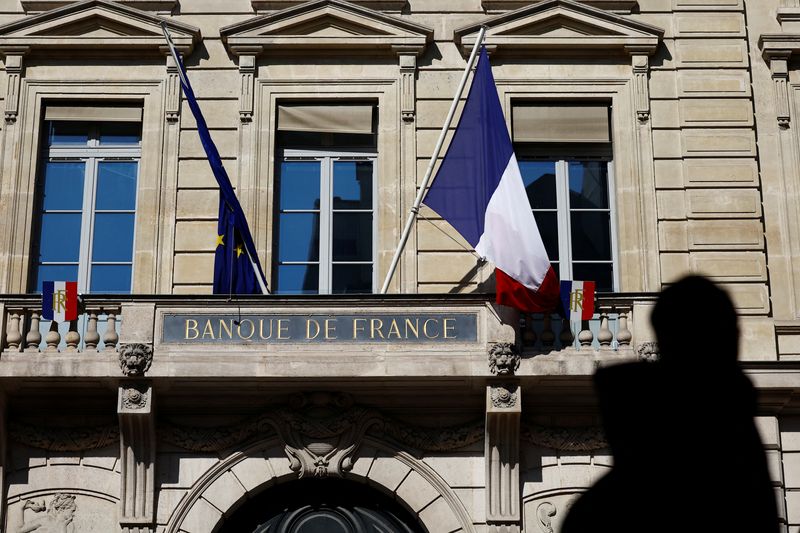PARIS (Reuters) -France’s economy will slow more sharply this year than previously expected as U.S. trade tensions hit demand for French exports, the central bank said on Wednesday in its quarterly outlook.
After expanding 1.1% last year, the euro zone’s second-biggest economy is set to grow only 0.6% this year, the Bank of France forecast, revising its estimate down from 0.7% projected three months ago.
The central bank estimated that U.S. tariff threats and associated economic uncertainty would cost the French economy 0.4 percentage points of GDP cumulatively through 2027, with half of that impact already factored into previous forecasts.
Most of the hit to growth came not directly from tariffs, but rather the general climate of uncertainty around tariffs, the Bank of France said, adding its calculations were based on assumptions that tariffs would remain at the 10% level the Trump administration has threatened.
“This unpredictability amplifies the French and European challenge of sluggish growth, which has existed for too long,” Bank of France Governor Francois Villeroy de Galhau said in an interview with Les Echos business newspaper.
The central bank said its monthly business climate survey suggested that the economy would grow only 0.1% in the second quarter, unchanged from the first quarter.
Looking beyond this year, growth was expected to strengthen to 1.0% in 2026 and 1.2% in 2027, down from March projections of 1.2% and 1.3% respectively.
This year economic activity would be supported by domestic demand and companies rebuilding low inventories, while foreign trade would weigh negatively on growth.
The recovery in 2026 and 2027 would be driven by real wage gains boosting consumer demand while private investments – mainly home purchases – would benefit from lower interest rates.
Inflation forecasts were also cut as lower power and oil prices weigh on the outlook with EU harmonized consumer price inflation expected to average only 1.0%, down from 1.3% previously.
In 2026, inflation was seen at 1.4% and 1.8% in 2027, down respectively from 1.6% and 1.9%.
(Reporting by Leigh Thomas, Editing by William Maclean)
